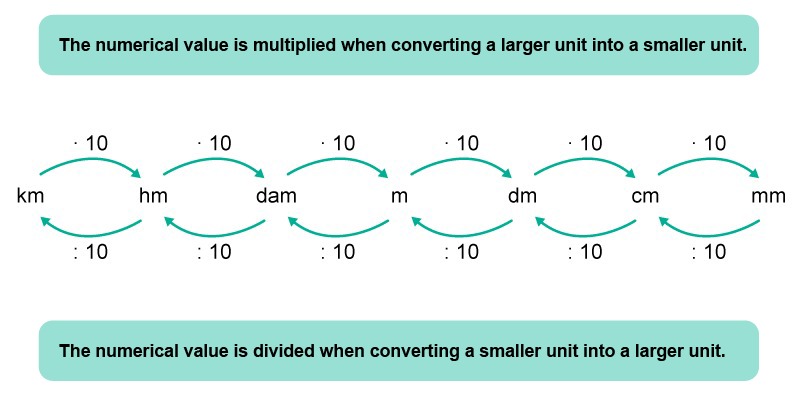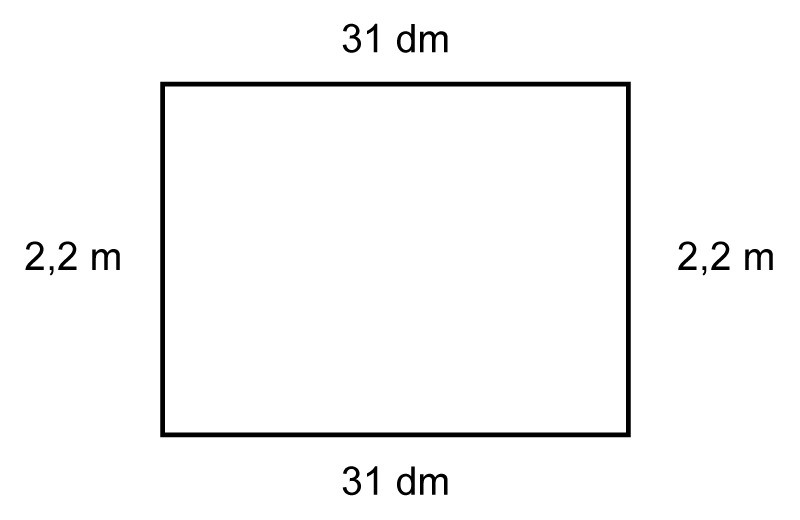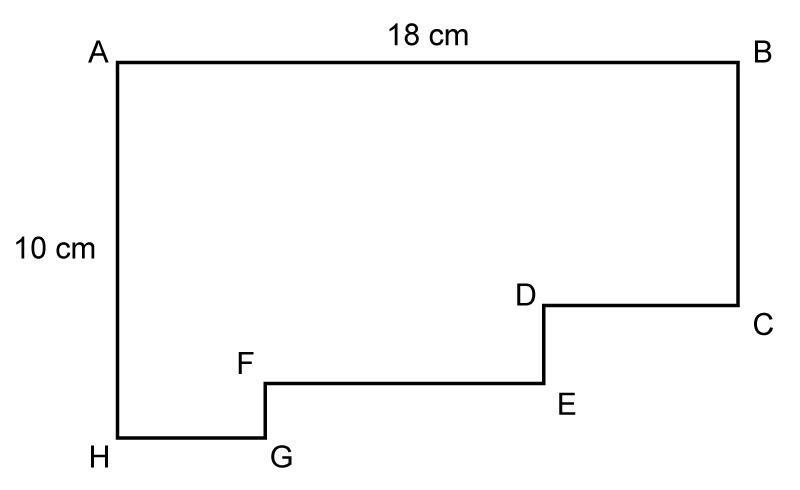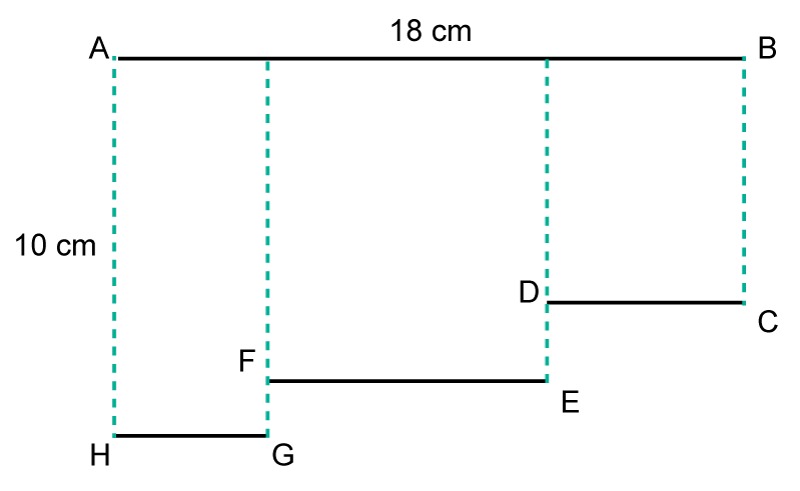11. Lengths and perimeters
Exercises
Length units
The basic unit of length according to the SI system is the metre. The ratio of length units in the SI system is 10. The table shows the most commonly used length units.
| Symbol | Name | Value in metres |
|---|---|---|
| km | kilometre | 1000 m |
| hm | hectometre | 100 m |
| dam | decametre | 10 m |
| m | metre | 1 m |
| dm | decimetre | 0,1 m |
| cm | centimetre | 0,01 m |
| mm | millimetre | 0,001 m |
A smaller unit can be converted into a larger one by dividing its numerical value by the ratio. A larger unit can be converted into a smaller unit by multiplying its value by the ratio.

Examples
Example 1
Convert the following lengths to decimetres.
a) 40 centimetres
[[$\begin{align} 40 \text{ cm} = \dfrac{40}{10} \text{ dm} = 4 \text{ dm} && \text{Converted to one unit greater.} \end{align} $]]
b) 6 decametres
[[$\begin{align} 6 \text{ m} = 10 \cdot 10 \cdot 6 \text{ dm} = 600 \text{ dm} && \text{Converted to two units smaller.} \end{align} $]]
In unit conversions, we can also directly utilize the knowledge that the number notation system we use is decimal and has a base number of 10. Thus, every shift of a decimal point to the right corresponds to multiplying the numerical value by ten. This can be used to convert a larger unit into a smaller one. Correspondingly, each shift of the decimal point to the left increases the unit of the numerical value by one unit.
Example 2
Convert the following lengths a) [[$\text{4,2}$]] km and b) [[$\text{3}$]] cm to metres.

In addition to the SI units mentioned above, other length units are also sometimes used. For example, the sizes of television and computer screens, as well as the tire sizes of bicycles, are expressed in inches. Other commonly used units can be converted to SI units based on the information found in the table below:
| Length conversions |
|---|
| 1'' = 1 inch = 25.4 mm = 2.54 cm |
| 1 mi = 1 mile = 1609 m = 1.609 km |
Example 3
Matthew is ordering jeans from the internet. The size of the jeans is given in the format 29 W / 30 L. This marking means that the waist circumference of the jeans is 29 inches and the inside length of their legs are 30 inches. Matthew does not know the right size for him would be, and he only has a standard tape measure at his disposal. How does he solve the problem?
First, Matthew must measure his waist circumference with a tape measure and the result is 81 cm. He must then measure the length of his own leg, which is 86 cm. After doing this, he must convert these dimensions into inches, using the information that 1 inch = 2.54 cm.
[[$ \begin{align} \dfrac{81 \text{ cm}}{2.54 \text{ cm}} \approx 32 & \text{ and} & \dfrac{86 \text{ cm}}{2.54 \text{ cm}} \approx 34 \end{align} $]]
Answer: The suitable jeans size for Matthew is 32 W / 34 L.
The perimeter of a polygon
The perimeter (p) of a polygon is calculated by adding the lengths of the polygon's sides together.
Example 4
Calculate the perimeter of the adjacent rectangle.

Note! Before the lengths can be combined, they must be reported in the same units.
[[$31$]] dm [[$ = \text{3.1}$]] m
[[$ p = \text{2.2 m} + \text{ 3.1 m } + \text{ 2.2 m } + \text{ 3.1 m } = \text{ 10.6 m}$]].
Answer: The perimeter of the rectangle is 10.6 m.
Example 5
Calculate the perimeter of octagon ABCDEFGH.
The perimeter is calculated by adding the lengths of the sides together. Not all side lengths are given in the task, but the total length of these sides can be deduced.

The combined length of sides CD, EF and GH is 18 cm. Respectively, the combined length of sides BC, DE and FG is 10 cm.
The perimeter is thus calculated as follows:
[[$p =18 $]] cm [[$ + 10$]] cm [[$ +18$]] cm [[$ + 10$]] cm [[$ = 56$]] cm.
Answer: The perimeter of the octagon is 56 cm.